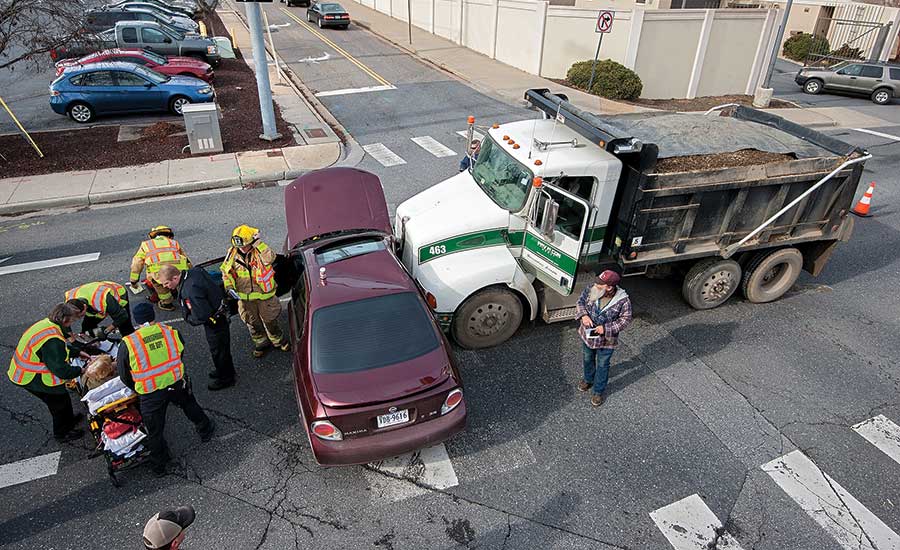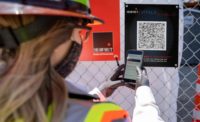At a seminar full of contractors and insurance safety professionals, Carl Heinlein asked, “How many of you consider yourselves good drivers?” As if it were a coordinated flag raising, almost everyone raised a hand.
“Now, how many of you are lying?” he joked. Amid scattered laughs, a few of the same hands slowly went up again.
Heinlein, a senior safety consultant for insurer American Contractors Insurance Group, Richardson, Texas, spoke about vehicle and fleet safety, an understudied risk that is complicated by—as his thought experiment wittily exposed—the human tendency to self-delusion. His seminar, part of the International Risk Management Institute’s construction risk conference, held this year on Nov. 6 at the J.W. Marriott in Indianapolis, was a reminder that employers need to work harder to prevent vehicle and fleet accidents.
Although net written premiums have risen during the past 20 years—to $21 billion in 2016 from $13 billion in 1997—commercial auto liability insurance has been a money-losing business for much of that period.
The national picture for commercial vehicles isn’t pretty. Although net written premiums have risen during the past 20 years—to $21 billion in 2016 from $13 billion in 1997—commercial auto liability insurance has been a money-losing business for much of that period. The last time that line earned a profit was in 2010, according to S&P Global Market Intelligence data and the Insurance Information Institute.
Insurers have been slow to adjust policy limits to new realities, one executive said. In the past, a $1-million limit by a primary insurer had to be exhausted before umbrella policies could be tapped, but with rocketing medical and repair costs, “a $500,000 loss 25 years ago is likely a $2.5 million loss today,” he said.
Insurers and brokers at the IRMI conference all agreed that, over the past five years, regular rate increases for commercial vehicles haven’t improved losses. Joseph Cellura, president of the North American casualty unit of insurer Allied World, noted that the increases “have not been able to offset the emerging risks and circumstances that are contributing to [the] frequency and severity of claims.”
The basics of the nationwide bad-driving crisis are well known: texting, cell-phone usage and distractions in general. Further, drivers are driving faster, rear-end crashes are common, and more sophisticated, onboard computer equipment has multiplied repair costs.
“The risk is not limited to the oft-vilified heavy trucking class,” observed Cellura. “The trends are consistent throughout all commercial vehicle classes and weights.”
Heavy loads, compressed timeframes and complex work zones add to the problems. Fatigue is a threat, too. Heinlein drew a vivid picture of a recent vehicle-related case in which a worker—who drove more than two hours to and from the jobsite each day, some of it with sunlight directly in his eyes—rear-ended a stopped car at a traffic light, killing two passengers. The settlement: $7 million.
No Stigma for Unsafe Habits
Yet society doesn’t stigmatize unsafe driving habits, argued Heinlein. People speed and fail to signal, but those infractions are “socially acceptable,” he said. “Driving is different in that we break the rules but don’t feel the pain. We are short on people, so we allow people to break the rules. But we don’t do anything about it.”
Before an employee puts a key in the ignition of a company vehicle, a smart risk manager will test the employee’s driving skills and get his or her signature on a company vehicle-use pledge, Heinlein suggested. In addition, management’s game plan must include a vehicle-use policy, a written fleet-safety procedure, a driver selection process, training, accident and incident reporting, load securement, vehicle maintenance and garage inspections.
What does the future hold? Cellura indicated that a combination of continued rate increases, to account for escalating risk, and better driver safety controls are the “only option to keep the auto insurance market sustainable.” Heinlein agreed, but with human beings capable of overriding technical solutions, much of the answer will revolve around individuals, with all their human failings.





Post a comment to this article
Report Abusive Comment